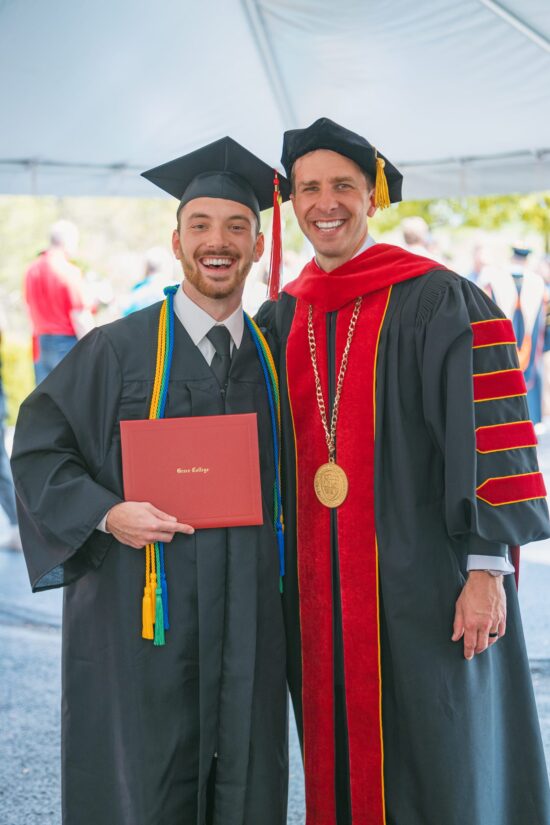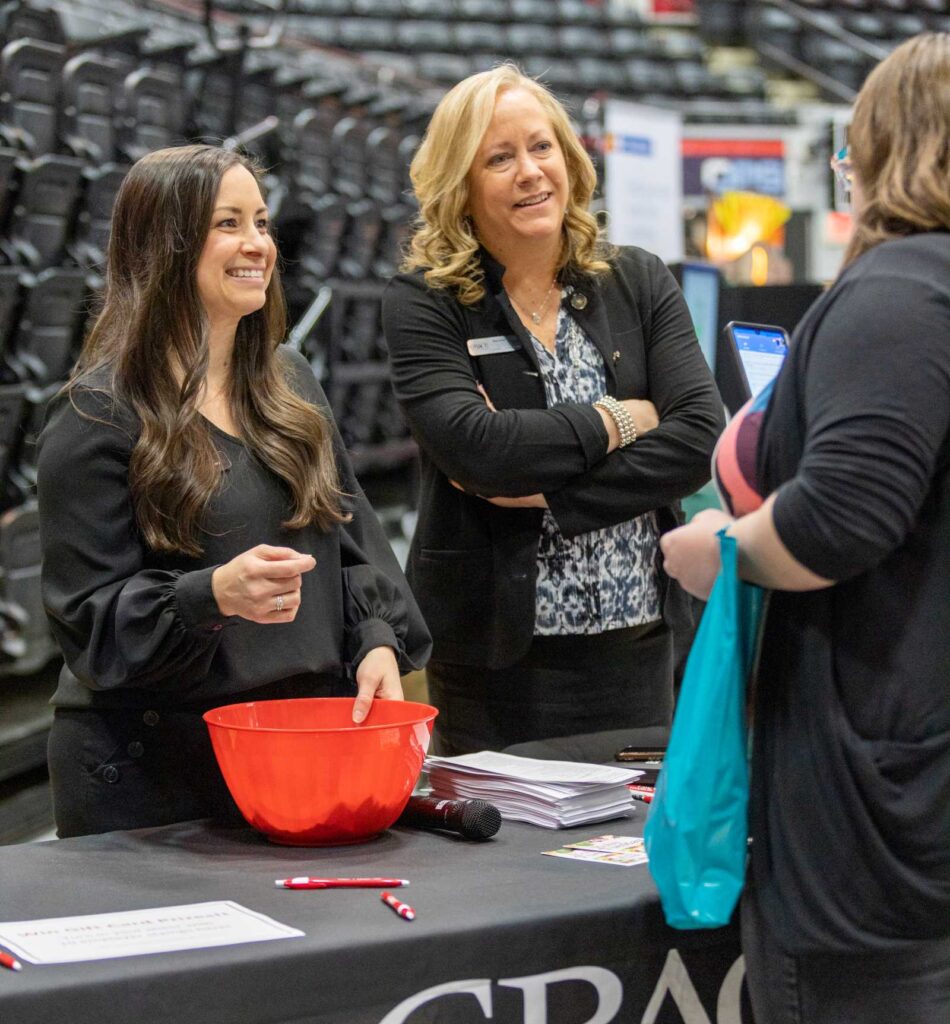3. Network.
Networking doesn’t have to be scary. Jaci Forshtay, Grace College’s career success coordinator, says, “Networking is relationship building.” You can network in a variety of ways, including establishing your online presence, conducting informational interviews, asking for introductions, and exposing yourself to companies in your field.
Establish your online presence to deepen your connections and help employers find you. Focus especially on developing your LinkedIn and Handshake profiles. When you meet someone, you can connect with them on LinkedIn after your introduction to remain connected. You can also use LinkedIn to connect with alumni in your field. Click on the alumni tab of your college’s page on LinkedIn to search for alumni in the fields or locations you’re interested in.
Likewise, Handshake can help you with finding a job after college. “Handshake is designed for recent graduates,” says Terry. “Companies who list jobs on Handshake aren’t looking for people who have tons of experience; they’re looking for people like you. Make sure that your Handshake profile is up to date so that you can find jobs that fit your interests and skill set.”
You should also spend time networking in person. If you want to learn more about what your job will look like, conduct informational interviews with people in fields that interest you. If you don’t know who to ask, start by asking a professor to connect you. You can ask questions such as:
- What does a typical day look like?
- What skills are required for this job?
- What do you like about your job?
- What do you wish someone had told you sooner?
Finally, expose yourself to companies in your industry. If your college has a Center for Career Connections, take advantage of their events to help you network with companies. Career fairs, mock interviews, and the etiquette dinner can help you discover companies you might want to work for. You just might discover job options you never considered before.
4. Polish your resume and cover letter.
“Your resume is the culmination of your educational journey,” says Terry. “You should put lots of thought and creativity into it.” Tailor your resume and cover letter to the specific job posting you are applying for. Your resume and cover letter should demonstrate that you understand the company and its needs. As you highlight your relevant experiences and accomplishments, think about what makes your experiences unique and how you have gone above and beyond.
Likewise, your cover letter should be creative. It should be cohesive with your resume, but expand on the experiences you include in your resume. Don’t be redundant! Instead, focus on sharing specific examples of how you’ve demonstrated your skills.
5. Look for jobs.
You can look for jobs on LinkedIn, Handshake, and Indeed. However, job openings rarely get posted on job search platforms. If you know of a company you want to work for, contact them directly to inquire about job openings. Make sure you also ask your connections about job opportunities instead of just applying for jobs online.
Also, be open to working temporary jobs. Working a temporary job or completing an internship can help you gain experience and get your foot in the door at a company, which might lead to a full-time job.
Forshtay advises, “Look at several jobs and companies to explore your options instead of putting all your eggs in one basket.”
“Be open to diverse opportunities,” Terry adds. “Don’t limit your options to your field.” Working a job that’s not in your field can open your eyes to other jobs you hadn’t considered. You might not get your dream job right out of college, but an entry-level position could lead to a promotion to the job of your dreams.
6. Apply.
When you find jobs that interest you, apply. If you find a job that sounds like your dream job but you can’t check every box on the list of applicant requirements, it’s still okay to apply! Maybe you won’t get the job, but sometimes students land their dream job right out of college. You won’t know unless you apply!






